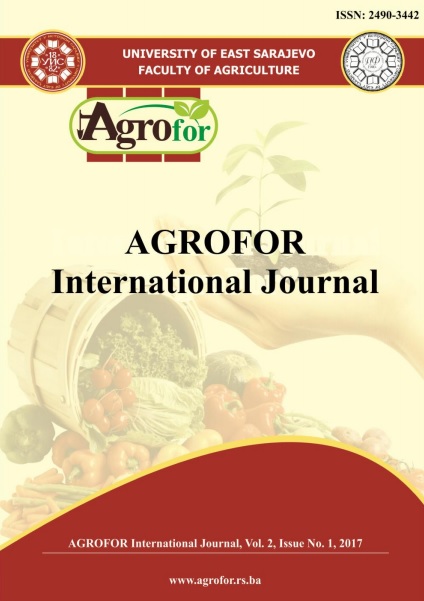ADAPTIVE CAPACITY OF SOME LAVENDER AND LAVANDIN CULTIVARSIN VITRO AND IN SITU
DOI:
https://doi.org/10.7251/AGRENG1701091GAbstract
Lavandula angustifolia Mill. and (LavandulaxintermediaEmericexLoisel) are
promising fragrant plants with medicinal, aromatic and ornamental properties.
Since the collection plantations of these crops are very damaged with viral
pathogens and there is lack of seed propagation in valuable cultivars 'Belyanka',
'Record' (lavender) and 'Rabat', 'Snezhnyi Bars' (lavandin), were introduced in
vitro. Chemotherapy was used for cleaning up. Regenerants were cultured (4-5
months) on MS medium with 0. 3 mg L- Kinetin, 0. 025 mg L- NAA and 0. 25 mg
L- GA3 at 25±1°C under 16-h photoperiod. Intact plants were studied during the
growing season. In order to reveal plants` biotechnological and genetic capacity
some biochemical stress indicators, indexes of photosynthetic activity and water
regime were identified. Under the open field cultivation, tested plants were rich in
ascorbic acid, phenolic compounds, and redox enzymes (catalase, polyphenol
oxidase, superoxide dismutase) were active. Leaf tissue hydration was 56-62%,
with greater part of bound water. Photosynthetic activity was reduced only in the
samples with visible damages with viral pathogens. In plants cultured in vitro,
amount of ascorbic acid and phenolic compounds were lower, so as enzymatic
activity and proline concentration were higher than in intact plants. The rate of
hydration was high (70-77%), with the same trend of water fractional composition.
Photosynthetic activity and vitality index indicated no photoinhibition. It was
found out the lavandin cultivars had better capacity for a wide use under various
culture conditions.

